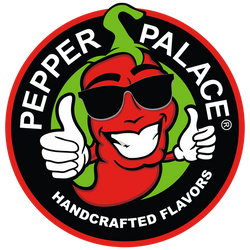Find a Store
Ask the Experts: What Makes Hot Sauce “Hot”?
You can find spicy condiments in cultures around the world, from mustard and wasabi to horseradish and, of course, hot sauce. While each of these spicy sauces is capable of providing tongue-searing spice, there are a variety of ingredients responsible for bringing the heat. Let’s take a deep dive into our favorite fiery brew to find out exactly what puts the “hot” in “hot sauce.”
What is Hot Sauce Made of?
You only need two simple ingredients to make hot sauce: Hot peppers and liquid—usually vinegar, but not always. Sounds simple, but with dozens of different hot peppers, each with their own unique flavor and fire, and countless types of liquid to mix them into, there are no limits to the number of different hot sauce combinations out there. Most hot sauce recipes include a handful of other flavorful ingredients, like garlic, salt, and ginger, but these taste-boosters are totally optional.
What Ingredients Make Hot Sauce “Hot”?
If hot sauce is made of hot peppers and liquid, then it probably goes without saying that the hot peppers are responsible for bringing the heat that singes your sinuses. That’s because hot peppers naturally contain a chemical compound called “capsaicin.” While milder peppers, like Pepperoncini and Jalapeños, contain lower concentrations of capsaicin, their super-spicy counterparts, like Ghost Peppers and Reapers, are chock full of this crazy-hot compound. So, hot sauces made with milder peppers tend to be more mild, while hot sauces made with the world’s hottest peppers are almost inedible (emphasis on “almost”—we’ve never actually met a hot sauce that we wouldn’t try twice). Some hot sauce producers, like the super spice scientists at Pepper Palace, take things to the next level by throwing some pepper extract, which is just pure capsaicin, in the mix to make extreme hot sauces for only the most hardcore chiliheads.
What is Capsaicin Made of?
Capsaicin (pronounced kap-SAY-sin) is responsible for making hot peppers, and by extension, hot sauce, “hot”, but what exactly is it? For you science nerds out there, the official chemical formula for capsaicin is C18H27NO3. If that went right over your head, don’t worry. In simpler terms, capsaicin is a combination of carbon, hydrogen, oxygen and nitrogen, but those seemingly harmless elements are arranged in such a way that could make a grown man cry. Scientists suspect that plants started producing capsaicin as a defense mechanism to prevent animals from eating them. Those plants were sorely mistaken, since that spicy stuff is just what so many of us crave—joke’s on you, mother nature!
How Do You Make Super Hot Sauce?
If you’re looking to cook up your own super hot hot sauce, you’ll need the hottest hot peppers you can find (reapers or ghost peppers are ideal options here) plus your liquid of choice, though we suggest regular ol’ vinegar. Roast the peppers in the oven or on the grill for about 20 minutes until the skins start to char, then toss ‘em in the food processor with some liquid. Add optional flavor enhancers, like roasted garlic, salt, or even a dash of tequila, and enjoy! But be warned: this whole process can produce some wicked-hot vapors that have been known to burn eyes, singe sinuses, and inflict excruciating pain on unsuspecting paper cuts. If you are bold enough to try this at home, be sure to wear protective gear. If you prefer to play it safe, you could also just buy some extreme hot sauce from your local Pepper Palace (or have it shipped straight to your doorstep) and save yourself the potential pain—your choice, boss.
